Let’s face it, Shrewsbury International School has an extraordinary campus, resources and facilities that public schools cannot even dream of. Here, you have to pay a little over 1,000,000 million Thai Baht for a school-age child (around $ 45,000 Canadian) and around $ 20,000 Canadian for a preschooler, each year. And in this price, we do not count the optional activities and courses that the majority of children have the chance to follow on campus. On the other hand, as in Finland, meals and snacks are provided there in order to ensure a healthy diet with the least amount of sugar, salt and processed products possible, since here, too, it is considered to make a huge difference in children’s performance. Needless to say, in a country where the average annual salary is less than $ 7,500 Canadian, this school is only accessible to a very small elite, often foreigners or the children of the greatest Thai fortunes. In this British college attended by 1700 pupils from 3 to 18 years old, coming from forty countries, almost all the teachers come from Great Britain, or at least, have their training there, and the assistants are Thai or Filipino. Open for 16 years, the magnificent campus of this school is located on the riverside in Bangkok. The college also has a second campus in Bangkok, the City Campus, as well as a junior school (for 3-11 year olds), in Hong-Kong as well as three school projects which will open over the next 3 years in China. . Here, the groups are made up of 14 to 22 students depending on age and each class has at least 1 teacher and 1 assistant (2 assistants for the youngest). The main objective of the educational program of this college is to give all the necessary tools to children to allow them to join the ranks of the largest international universities and we do not skimp on the means to get there. You will understand, the children who frequent it are privileged. They do not represent, in any case, the vast majority of Thai children. So why, you say, linger at this school? Because despite everything, we find in his pedagogy, his extracurricular activities and his community values several magnificent ideas that it would be quite possible to implant in all schools of the world, and that their social implication really deserves to be underlined (Next week’s article will also focus on this aspect.) In the meantime, I invite you to visit, with us, a school that will make more than one dream. Welcome to Shrewsbury International School, River Side Campus, Bangkok.

The school pools. Here, all children have compulsory swimming lessons in the program.
As mentioned, Shrewsbury International School uses the British curriculum as the basis for its teaching. Sally Weston, the vice-president and responsible for the junior portion of the college (3-11 years old), emphasizes, on the other hand, that it has been adapted to international reality, certain subjects not being adapted to local culture. For her, the important thing is to educate children as a whole, not just to allow them to perform in math or languages. The college therefore works to allow them to open up to the world around them, to become good people, calm and respectful and, as many will attend university or even secondary schools in other countries of the world, to develop aspects who are less valued by Thai culture as critical thinking. I suggest you listen to the first part of the interview I conducted with Ms. Weston, before continuing to read this text.
A visit to the premises
Our visit begins with the pre-school classes, 3 to 4 years old. Here, each class has large doors, open all day, where children have free access to the outside. Depending on the activity the child wishes to do, he will find the necessary equipment inside or outside. In fact, the magnificent classrooms are built so that they continue outside. Corners are arranged inside, others outside, and periodically, the material made available to the pupils, almost entirely in wood, is changed in order to maintain their interest and curiosity. Among toddlers, although a plan is in place, teachers also adapt enormously to the interests of children. For example, if the whole class becomes interested in butterflies flying in the course, the teacher will modify her approach in order to integrate this interest in the learning of toddlers. Here, no pedagogy has been preferred to another. The preschool educational program has been built to make the most of the different existing pedagogies such as Montessori, Waldorf and Reggio, with a marked emphasis on discovery and manipulation. During the second year of school attendance, when the children are 4 years old, they will slowly start learning to read and write, which will continue more seriously in the following two years. The course to which the children have access was built on the concept of schools in the wood. When you live in a city of 15 million inhabitants, contact with nature is not part of everyday life. The school therefore wanted to compensate as best as it could for this reality, always with the aim of offering a complete experience for children.
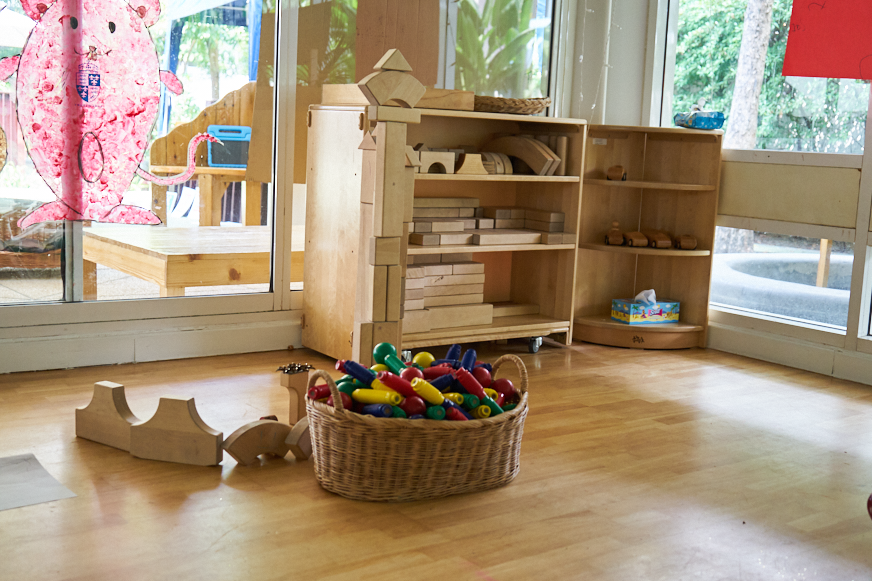 |
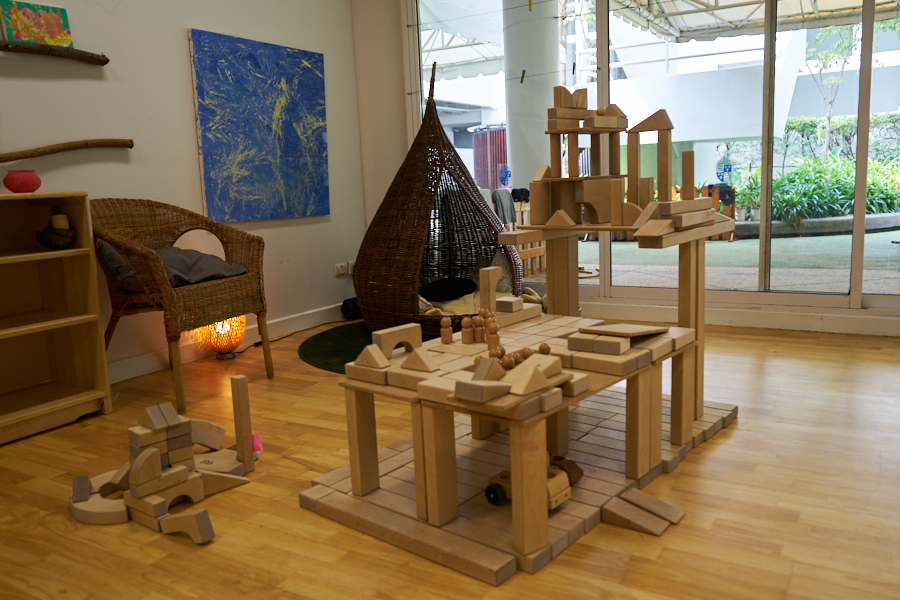 |
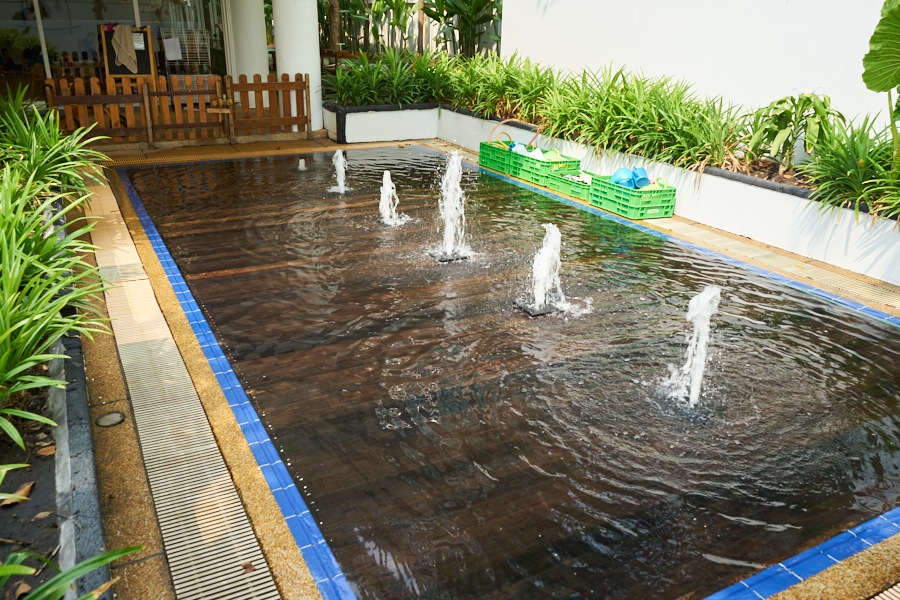 |
 |
An overview of preschool classes. In the courtyard, they have a very shallow pool of water where they can have fun and draw water for their different experiences and activities.
When children reach 5 years of age, they go upstairs for the next 2 years. The educational program then becomes, in the words of the Vice-Rector, more serious. Although the manipulation and discovery continue thanks to the activities arranged on the huge outdoor balcony adjacent to the classroom, academic subjects now form a large part of the children’s timetable. It is also at this age that they start the school sports program (including swimming lessons) and the music program. Shrewsbury International School has nothing to envy in this regard to the biggest conservatories, and the school’s musical program is one of its pride. The music department has 22 individual soundproof practice rooms and a few classes for group practices. An impressive number of teachers offer optional lessons, which gives children the chance to choose the instrument of their choice. Of the 1,700 students who attend the school, more than 800 of them attend individual music lessons. As for the sports department, many gymnasiums, a palaestra, several swimming pools, etc. are available. Here too, there are many optional courses. Martial arts, sports teams, dances of all styles, whatever a child might want to do as a sport, the option will be there.
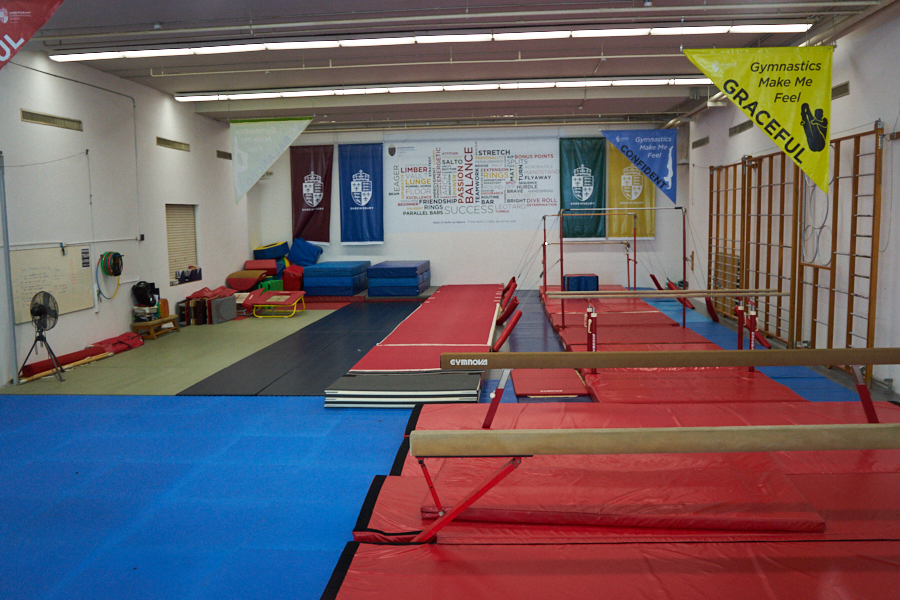 |
 |
One of the things that stands out when you visit school is the amount of books in it. Although the school has a huge library on 3 floors, small libraries and inviting reading nooks can be found everywhere. In classrooms, in hallways, in the administrative office, in the cafeteria, outside, etc. Very great importance is given to reading since it is considered to be the gateway to all knowledge. Children are therefore invited to read anytime, anywhere. An idea that deserves to be taken up everywhere, don’t you think?
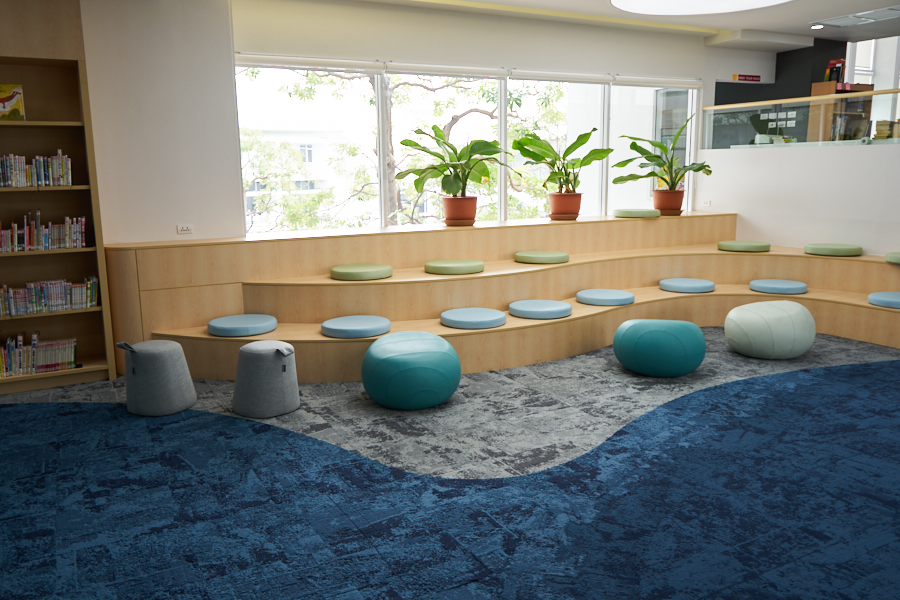 |
 |
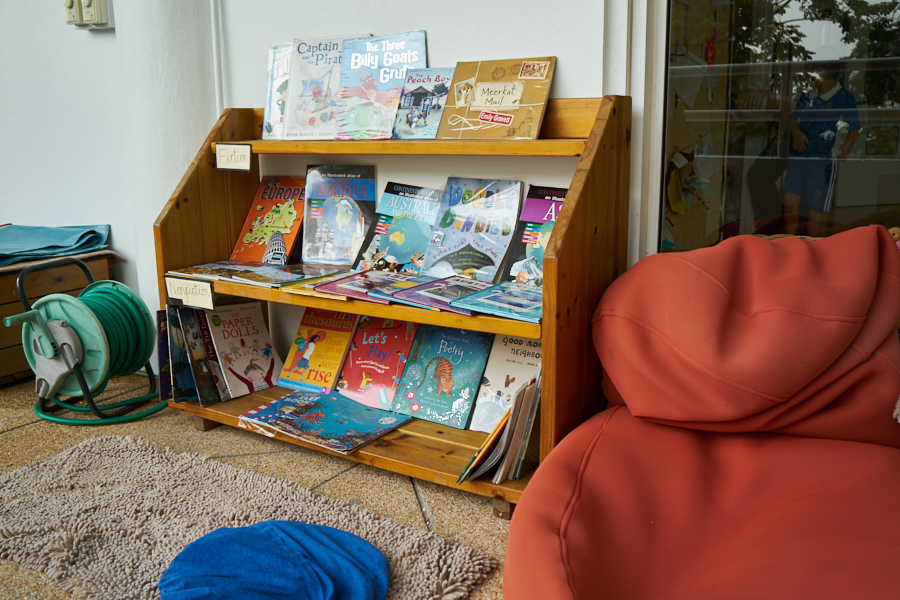 |
|
For school-aged children, the school has chosen to work by theme and by survey in order to arouse children’s interest. Six major themes are used each year (different depending on the age of the children), and are applied to all learning. In the corridors, staff will not hesitate to set up temporary stations where children can indulge in role-playing. For example, during our visit, the 7 year old children worked the animals of the world. A veterinary hospital had been set up in an alcove to allow the children to experiment. Kitchen, carpentry and technology rooms with 3D printer for example are also available to be able to push the learning further.
 |
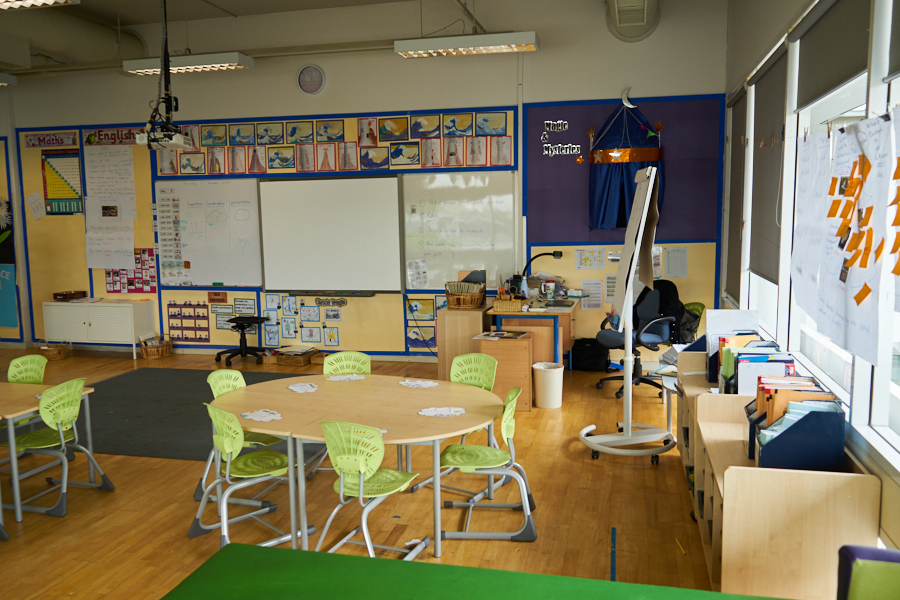 |
At Shrewsbury International School, school starts at 7:30 a.m., and with the exception of preschool (which ends around noon), regular lessons end at 2:20 p.m. On the other hand, from the age of 6, all children have the obligation to follow at least one optional course per week after class. The majority do much more. But let’s focus first on the daily program.
Upon arrival, the children play outside until 7:30 am, when they will be divided into small groups until 7:50 am. During this first period, students with difficulties in a particular subject will be offered remedial courses in what are called intervention groups here. The other children will have to carry out tasks related to the proper functioning of the school or will participate in workshops aimed at developing certain aspects, such as, for example, their critical thinking.
Then, each child goes to class for the first two morning lessons, which take place from 8:10 am to 9:40 am and will be followed by a snack break.
Then, the children will attend two other lessons before gathering for lunch and a period of free play. During this period, the school offers different activities to children who want to: board games, different sports and social activities, access to the library, etc. The objective of this period is to promote collaborative play and social interactions, values that are not naturally present among Thai people, especially those living in big cities.
The day then continues with 2 other lesson periods before ending at 2:20 p.m. At that time, either the children return home, or they participate in their daily activity which is part of what they call U-Time.
This period aims to allow children to grow as people and discover new interests. Many will also do very well on the registration file for a major university. And believe me, there is a choice for everyone. Between 200 and 300 different courses are offered each session and they range from sports of all kinds (martial arts, sports teams, swimming, dancing, etc.) to cooking, meditation, science, math or reading clubs. , yoga, language lessons, gardening, etc. Although participation in one of these courses is compulsory every week, the majority of students choose several because of the great interest of these. Over the years, the team will try to encourage them to do and try different things to allow them to open their horizons.
The school prides itself on following studies and adapting its environment to the results of these. For example, in recent years, many studies have shown that when learning new information, many children listen better and therefore learn better, if they can lie on the ground or at least be in a different position. of the one they usually use. The school is therefore equipped with cushions and rugs to put on the floor and when the teacher plans to integrate new material, he discusses the day before, with the children, about how they want to learn. They then set up the classroom together accordingly.
As many children attending this school will also attend American schools during their school career and will finish in the biggest universities of the planet, the program has been adapted in order to allow the children to better adapt to the North learning methods. -Américaine. Emphasis is therefore placed, from the age of 10, on teamwork and the development of debate skills. The classes are therefore all equipped with common tables rather than individual desks and no place is allocated to allow children to vary the groups according to learning.
This is what completes the presentation of this extraordinary school. Honestly, I think there is much to be inspired by, whatever the financial means of our school is not it. In the meantime, what do you think? Next week, we will focus on the social involvement of this school and a large part of private schools in Thailand.
Good week.